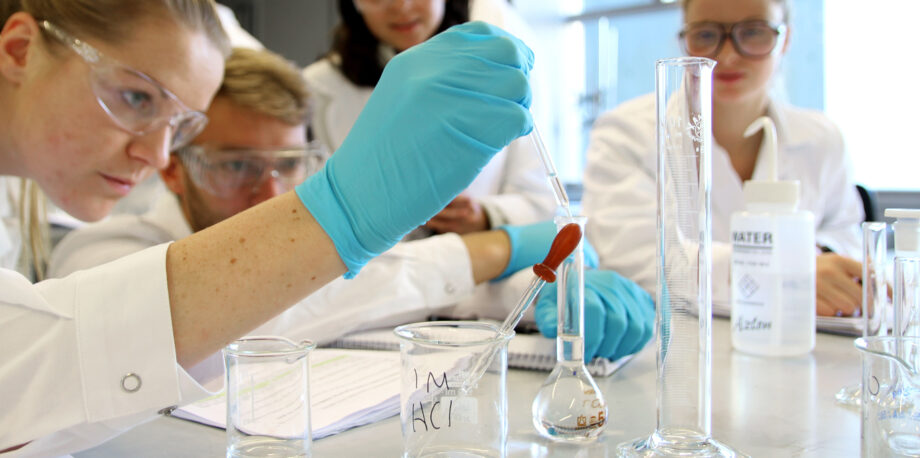June 19, 2019 — Think chemistry classes should be all about balancing chemical equations and memorizing the periodic table? Think again.
In a paper published last month in Nature Sustainability, researchers from North America and Western Europe recommend that educators put chemistry in context by devoting more time to how the discipline affects society and the environment.
Take, for example, the Haber-Bosch process, which reacts nitrogen from the air with hydrogen from natural gas to create ammonia — an essential ingredient in many of the fertilizers used to grow the crops that feed the world. Chemistry curricula almost always mention this process, the study says, but rarely cover how immensely important it is in global agriculture.
Getting even less attention? Overproduction of ammonia. Companies now create so much of the chemical that nitrogen pollution is a real threat to waterways and nitrogen production a real contributor to the greenhouse gases that cause climate change.
Chemistry, the researchers say, has long focused on “creating new products and materials” without considering how those products and materials will affect environmental systems. The authors, who are members of the International Union of Pure and Applied Chemistry’s task force on Systems Thinking in Chemistry Education, contend that until chemistry classes cover issues like this, students won’t get the full picture.
The solution? The researchers recommend that chemistry educators make sustainability a central theme of their classes, adopting a “systems thinking” approach that examines how the effects of chemical reactions ripple out into social and environmental systems in complex ways.
That Haber-Bosch process, for example, is deeply intertwined with environmental frameworks such as the United Nations’ Sustainable Development Goals in multiple ways. While ammonia fertilizer relates to the objectives of ending hunger and poverty, overproduction is a threat to life on land, life underwater and clean water sources for humans. Students, the authors posit, should hear about these implications as well as about the process itself.
Similarly, the study says, students could apply chemical principles to explore the implications of greenhouse gas production instead of just studying scientific gas laws outside of their real-world context.
Some groups have taken practical steps to bring these ideas into the classroom. The authors point out that the American Chemical Society is developing a road map for bringing “green chemistry” into curricula. And at the K–12 level, the Next Generation Science Standards, which have been adopted by 19 states so far, include “systems and system models” as a crosscutting concept for all scientific disciplines, including chemistry.
With chemistry and chemicals at the center of numerous environmental crises — and their solutions — incorporating sustainability into chemistry education could make a big difference.
Related Posts
Ensia shares solutions-focused stories free of charge through our online magazine and partner media. That means audiences around the world have ready access to stories that can — and do — help them shape a better future. If you value our work, please show your support today.
Yes, I'll support Ensia!



